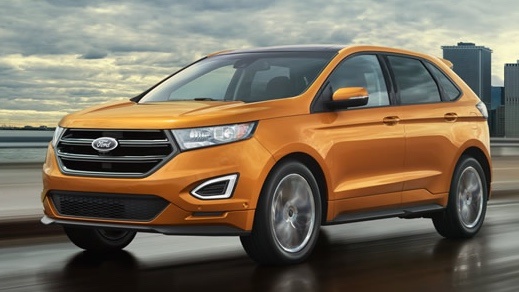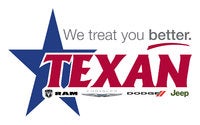Used 2016 Ford Edge for Sale near Houston, TX

With its 2016 Edge Sport, Ford has a major homework assignment to complete before it can hope to compete with Audi.
For its larger family-oriented cars and crossovers, Ford is slowly fleshing out a “Sport” labeled sub-brand. The Explorer Sport came first, the Edge Sport arrived shortly thereafter, and the Fusion Sport debuts for 2017. All three look like they can provide performance, and thanks to standard twin-turbocharged V6 engines, they deliver.
4.7 Overall rating
(31 reviews)The Ford Edge I bought was the titanium trim, so its absolutely loaded with features. The biggest surprises for me was that the rear seats are heated as well, and that the leather seats are some of the comfiest non- luxury brand seats Ive sat on. The V6 also offers enough power, abs the transmission is smooth through the gears. I was very pleasantly surprised by the quality and the ride of this vehicle.
Fantastic and reliable vehicle with many great features. Very well appointed vehicle and smooth handling. Very preppy pickup while good on gas. Interior is quite large and cargo space is very spacious. The split folding rear seats add to more storage room for big moves.
I bought a Platinum Ford Edge and it comes with all the bells and whistles. The car is in great condition and the value is high for the low price. The car is not missing anything. On the contrary, it has more features than I expected. Im very happy. I cant compare this car to any other because Ive only driven Ford Edge mid sized SUVs.
Drives and runs great! Plenty of power and handles very well. All the features and options are great and it has plenty of room to be comfortable in any seat you’re in.
I test drove a 2016 Edge Sport AWD 2.7 V6 ecoboost with 87xxx miles. Asking price was $25k Felt like a new car, great performance for a family SUV . It was well optioned, Good seating position, well laid out. Comfortable ride for a sporty vehicle in this segment. In my opinion $25k is a reasonable asking price with the used car market being inflated. My only negative is the paddle shifter lag, but that’s a universal complaint with all non dct using paddles.
2016 Ford Edge FAQs
How much does the 2016 Ford Edge cost in Houston, TX?
The average 2016 Ford Edge costs about $11,873.95. The average price has decreased by -4.6% since last year. The 77 for sale near Houston, TX on CarGurus, range from $7,499 to $22,998 in price.
Is the 2016 Ford Edge a good car?
CarGurus experts gave the 2016 Ford Edge an overall rating of 8.5/10 and 2016 Ford Edge owners have rated the vehicle a 4.6/5 stars on average. If a vehicle has both strong expert and owner reviews, you can feel confident in its quality. If either expert reviews, owner reviews, or both are spotty, you might want to do some research to figure out where the car falls short.
How many 2016 Ford Edge vehicles in Houston, TX have no reported accidents or damage?
77 out of 77 for sale near Houston, TX have no reported accidents or damage.
Is the 2016 Ford Edge safe?
CarGurus experts gave the 2016 Ford Edge a safety rating of 7/10.
What is the fuel economy of the 2016 Ford Edge?
Depending on the engine and options, the 2016 Ford Edge gets between 20 and 24 MPG (or MPGe).
What fuel types are available?
Gasoline engines are available.
-
Ford Edge in Houston TX
-
OBS 1990s-era Chevy and Ford Trucks for Sale in Houston TX
-
OBS (1987 - 1997) Ford Trucks for Sale in Houston TX
-
Ford Trucks for Sale in Houston TX
-
Lifted Ford trucks for sale in Houston TX
-
Classic Muscle Cars for Sale in Houston TX
-
Ford Flex Fuel Vehicles for Sale in Houston TX
-
Cheap Muscle Cars for Sale in Houston TX
-
Ford SUVs & Crossovers for Sale in Houston TX
-
Classic Ford Trucks for Sale in Houston TX
-
All Used Cars
-
Manual Transmission Cars
-
Luxury Cars
-
Cars with Red Interior
-
Cheap Manual Cars
-
Hybrid Cars
-
Sports Cars
-
Electric SUVs
-
Cheap Trucks
-
Small Cars
-
Third Row SUVs
-
Three Quarter Ton Trucks
-
Lifted Trucks
-
Manual Transmission Trucks
-
Diesel Trucks
-
Hybrid SUVs
-
Dually Trucks
-
One Ton Trucks
-
Cheap SUVs
-
Lifted Ford Trucks
-
4x4 Trucks
-
Work Trucks
-
AWD SUVs
-
Ford Trucks
-
Chevrolet Trucks
-
Toyota Trucks
-
Trucks Under $10,000
-
Cars Under $15,000
-
Sports Cars Under $20,000
-
Trucks Under $20,000
-
Used Sedans for Sale with Low Mileage
-
Used SUVs / Crossovers for Sale with Low Mileage
-
Used Hatchbacks for Sale with Low Mileage
-
Used Convertibles for Sale with Low Mileage
-
Used Vans for Sale with Low Mileage
-
Used Minivans for Sale with Low Mileage
-
Used Pickup Trucks for Sale with Low Mileage
-
Used Coupes for Sale with Low Mileage
-
Used Wagons for Sale with Low Mileage




